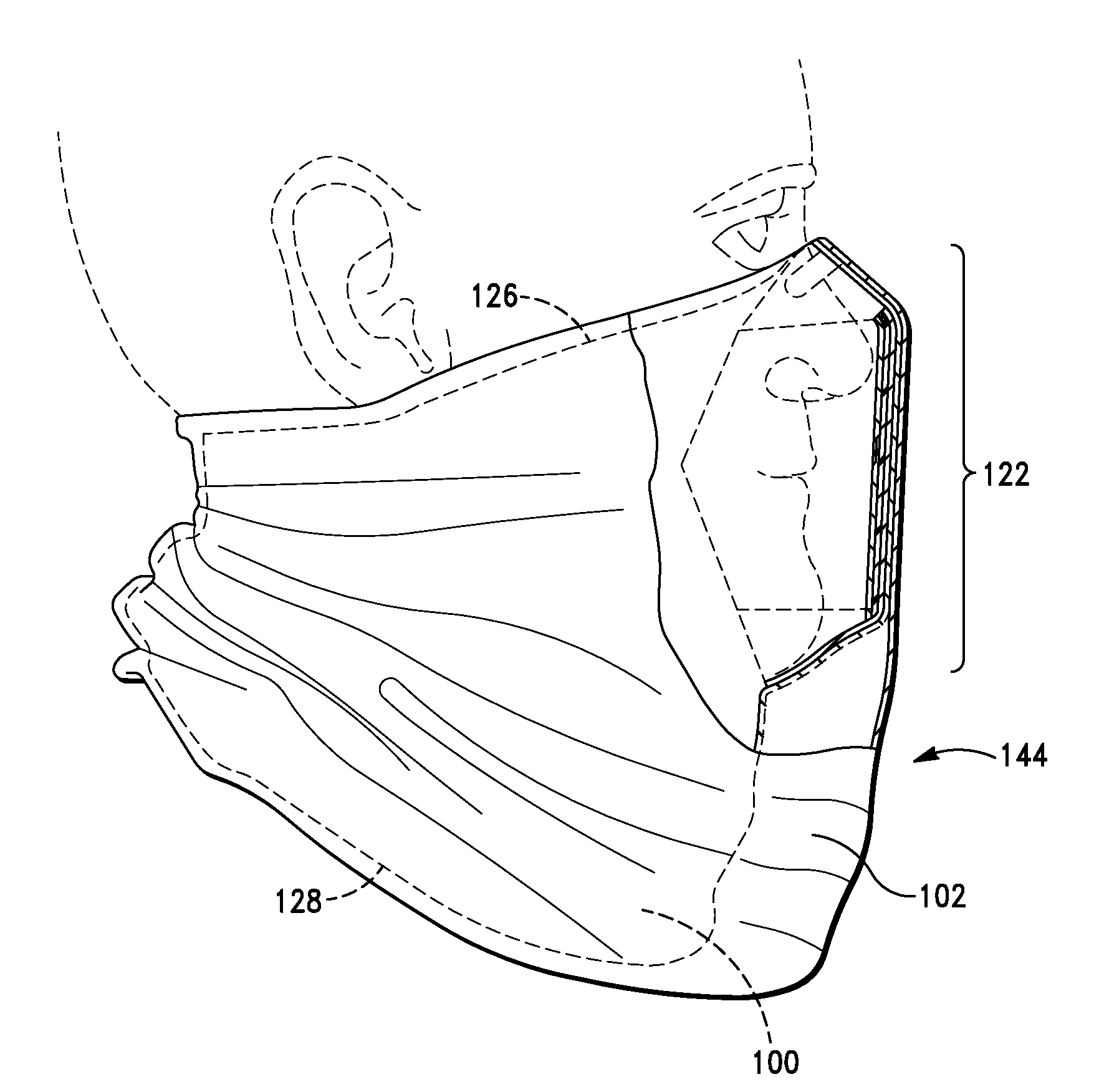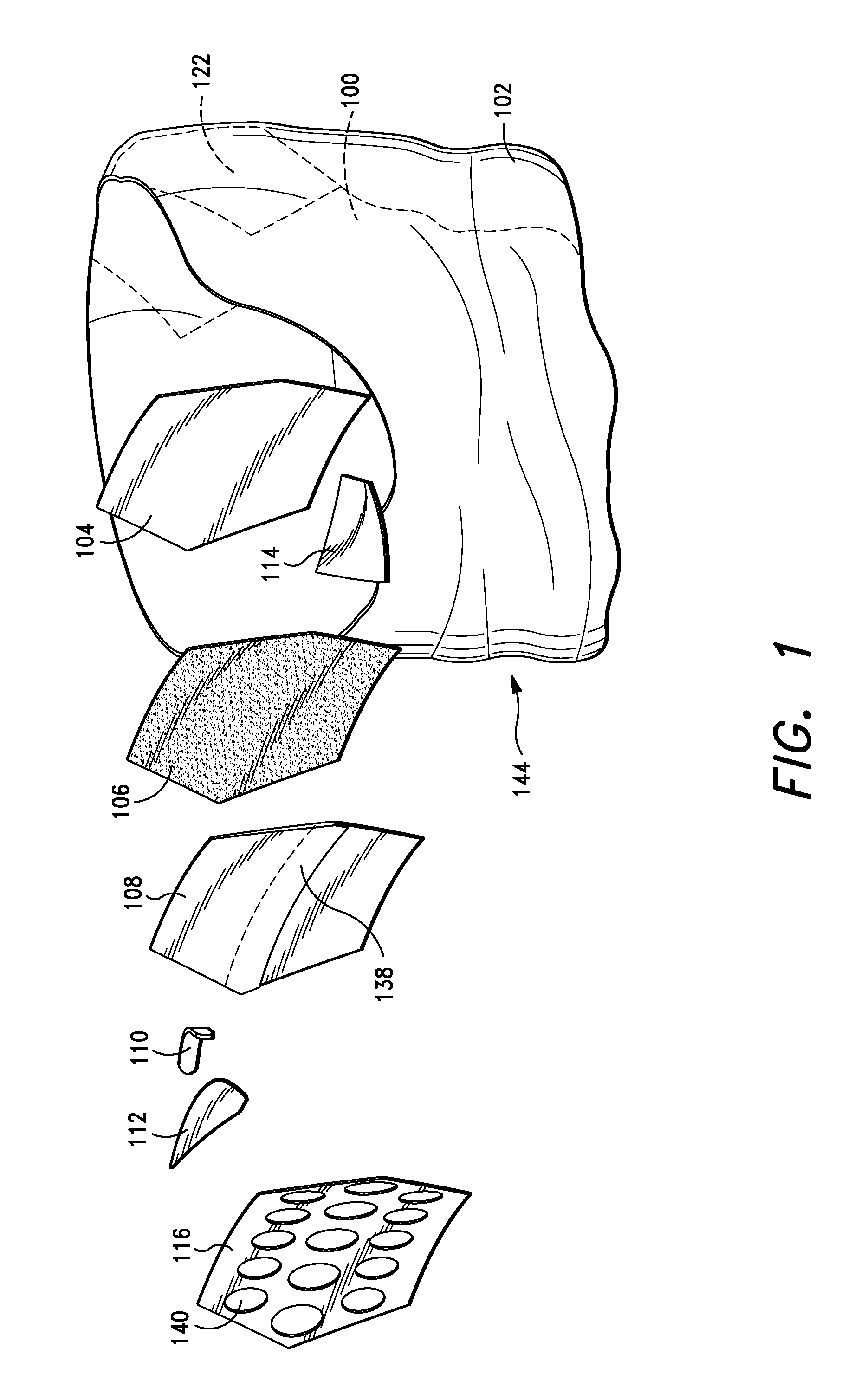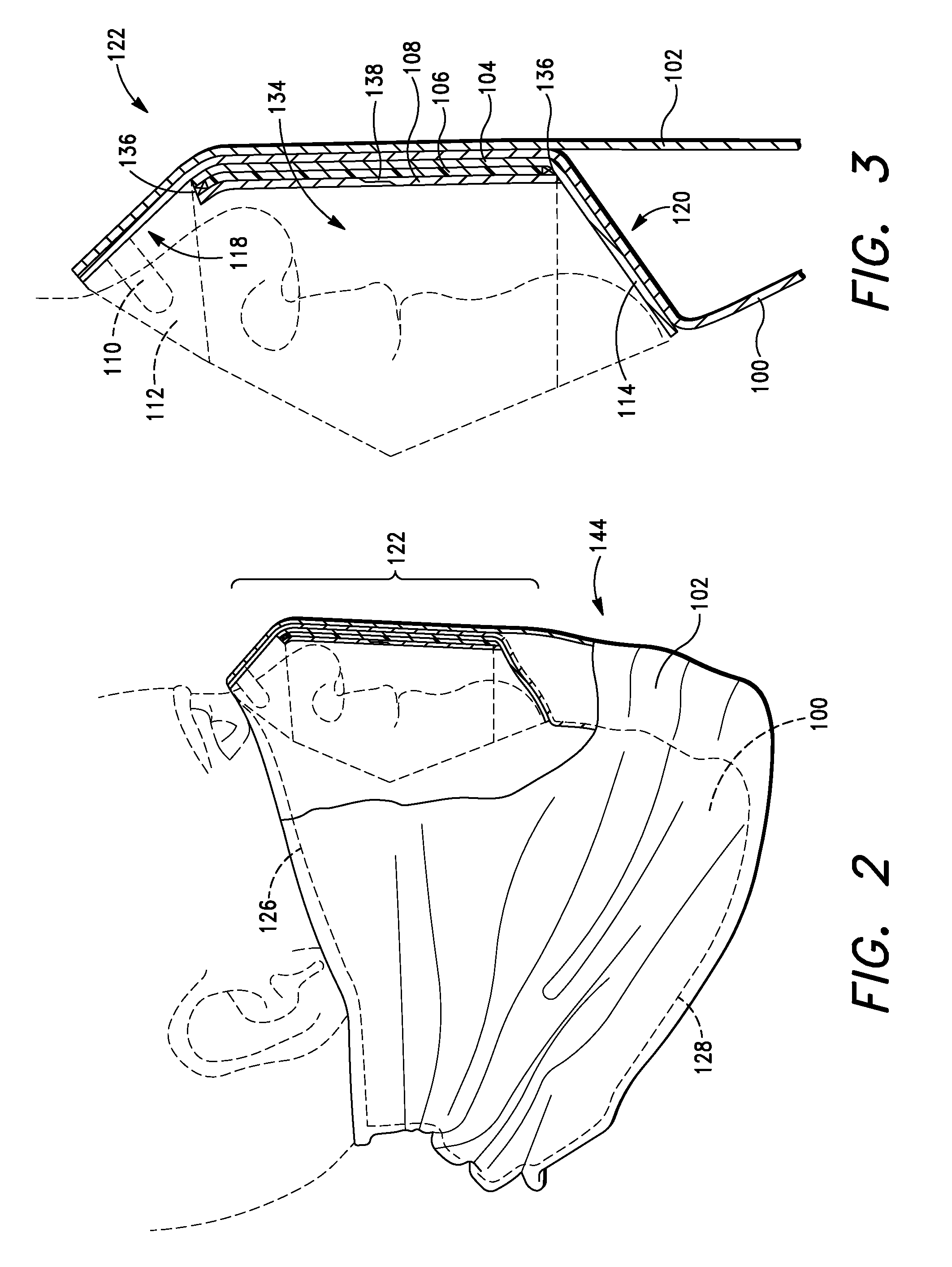Present art that offers some respiratory protection does not perform as well as conventional
face masks.
A filter or
mask affixed to a garment alone will not provide effective respiratory protection without sufficient
breathing space, filter surface area, and mechanisms to seal the filter around the nose and
mouth region.
This is often not done due to the general public not being accustomed to wearing respiratory protection, and therefore do not have the presence of mind to re-form the wire each time the garment in applied, compromising protection.
Filters that are placed against the nose and mouth provide minimal
effective surface area of the filter.
Also, there is no added protection of flying objects, such as insects and debris, from impacting the nose and mouth when participating in high speed activities such as riding a motorcycle, bicycle, or off-road vehicle.
These devices are not intended nor are they effective at protecting the wearer from odors and chemicals in the air, such as caused by motor vehicle and factory emissions and
cigarette smoke.
Although more aesthetically pleasing, the aforementioned masks are equally ineffective when adapted or affixed to an article of clothing.
Products without such devices fail to hold in place, or must be secured uncomfortably tight and may still fall down during periods of activity, failing to provide protection.
Furthermore, protective garments without a mechanism to secure the filter portion, so that the filter portion remains positioned over the nose and
mouth region, may rotate or shift with the movement and activity of the wearer.
The wearer may be unable to detect the filter portion is no longer correctly positioned over the nose and mouth region and protection compromised.
While this is acceptable in predictable
pollution environments, such as when donning
personal protective equipment (PPE) prior to entering a laboratory or surgical room, masks or garments that incorporate a
mask are not suitable in unpredictable
pollution environments, when the
hazard or irritant may appear without warning.
Unlike professional environments and tasks in which
exposure to hazards and irritants is typically predictable, the majority of the public cannot predictably know when particles, germs, or gases that irritate the individual will appear, such as
exhaust fumes, a
sick person coughing or sneezing, perfume or
cigarette smoke, and the like.
Lack of use of respiratory protection by the general public can be attributed to many people considering the wearing of such conspicuous garments to be publicly or fashionably unacceptable.
Such garments that lack an indexing element to identify the center of the filter portion, cause the wearer to be unable to confidently locate and center the filter over the nose and mouth when donning the garment, which may result with the filter improperly positioned.
A protective garment formed by use of a
rigid frame, an inserted pre-formed mask, or by gathering or pleating fabric in a manner to form and maintain shape, can be bulky and uncomfortable when lowered to below the chin; and will limit the wearers ability to further compress the garment down around the neck when not needed but desired to be kept readily available.
Protective garments made mostly, or entirely of non-stretch or
woven fabric do not conform well to the contours and movement of the head, face, and neck and fall easily during periods of activity, requiring the wearer to tighten the garment to the point of discomfort, which often leads to soreness, for example at the bridge of the nose.
Other devices to overcome the tendency of the protective garment to fall down, such as an elastic band along the upper edge of the garment, ear loops, or rigid media that push, rub, or pinch the
skin, also cause discomfort to the wearer, which leads the wearer to remove the garment to give relief to sore areas, even when protection would continue to be warranted.
This reduces the filtering surface area, and causes
saliva and
moisture from the wearer's breath to collect on the fabric and be continuously in contact with the mouth.
Persons in workplace environments have specific periods and places of when to wear and remove respiratory protection, and these masks are not necessarily designed to be comfortable enough for casual wear, or to wear for extended periods.
These masks are equally uncomfortable when adapted or affixed to an article of clothing.
If no mechanisms are in place to seal the gaps,
fogging of glasses will occur as the wearer exhales, especially during periods of
high activity.
Protective masks constructed for maximum protection and / or made of tightly woven material, make breathing difficult and also accumulate
moisture and heat inside the mask.
When these masks are used for general purposes not specified to the PPE, often the wearer removes the mask or lowers it below the nose due to discomfort, thereby compromising protection.
 Login to View More
Login to View More  Login to View More
Login to View More 


